
The Andes, second only in height to the Himalayas, is a must-go destination for any mountaineer aspiring to a bigger adventure than the Alps can offer. Nestled in Northern Peru, the Cordillera Blanca offers some of the finest and highest mountain routes in the Andes. Despite what many may think, it's not the reserve of guided groups with deep pockets. Climbing high technical peaks in the Cordillera Blanca is entirely possible on a DIY basis, and here's how...
The Cordillera Blanca or White Range is a section of the Andes in Northern Peru, nestled between the Amazon jungle basin in the East and Pacific Ocean in the West.
It counts to its name to eighteen 6000m high mountains, many dozens of 5000m peaks, along with the highest mountain in Peru, Huascaran (6700m) and the once acclaimed 'world's most beautiful mountain', Alpamayo (5990m). All of these mountains are easily accessible from the city of Huaraz, tucked in the middle of the range.
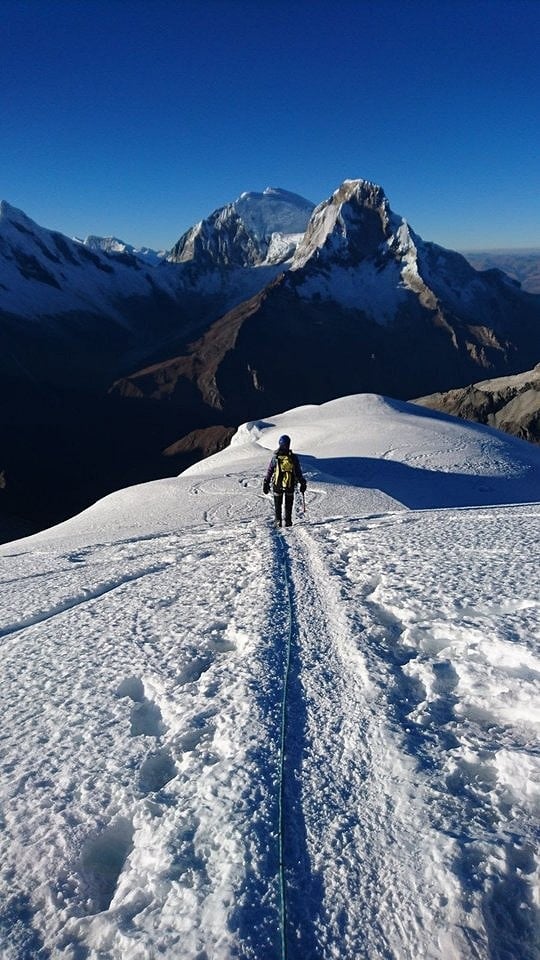
A quick look on the internet reveals a plethora of tour operators based in Huaraz and beyond offering mountaineering itineraries for many thousands of pounds. However, it doesn't have to be this way. With some Alpine experience on longer routes requiring overnighting in huts and tents (e.g. Mont Blanc, Chardonnet) or experience in smaller remote ranges (e.g. High Atlas in Morocco) it's totally possible to run your own expedition, with partners you know, on your timescale and certainly cheaper than on an arranged tour. With so many options of mountains and routes, you can choose the length and grade of the routes - from easy-to-bag snow plods, to 'Touching the Void' style epics.
From the start of the dry season in June, the weather and conditions tend to be stable for days on end until the return of the wet season in November – something you can only dream about in the Alps! The local guides open the routes at the start of the climbing season, establishing approaches, routes and equipping in situ belays and rappel anchors. One of the more refreshing benefits is that there's no need for permits or mandatory use of a guide and porters. The only fee is an entrance ticket to the Huascaran National Park, which costs £40 per person in 2018 and is valid for 3 weeks.
There are too many great mountains and routes to mention here, but here's just a flavour of some of the more popular peaks that climbers from around the world come to tackle. In general, the easier routes follow arêtes and ridges, with the mid grade routes taking snow and ice couloirs. The harder lines often incorporate an element of mixed climbing.
Lower grade / Acclimatisation routes
Ishinca and Urus are popular choices for acclimatisation peaks or easier bagged routes and are both are climbed from the Ishinca base camp (4300m). The former is a typical glacier snow plod, whereas Urus gives a little technical climbing around rock steps high on the glacier (grade II).
Maparaju (5326m) is another option for an acclimatisation route which tends to be quieter and more remote. The option of a lower camp at 3800m, before higher camps at 4300m and 4900m can help greatly with acclimatisation at the start of a trip. The climb itself traverses a glacier and rock band before heading up gentle snow slopes to the summit.
Pisco, named after the Peruvian spirit made from fermented grape must, is a classic easier peak at 5780m and sits in the middle of the range offering probably the best panoramic view of the Cordillera Blanca. The normal route up the West arête goes at PD, but more interesting direct lines take the snow ice couloir on the S face at AD/D.
Popular mid grade routes
Yannapacha is a great mountain for a short walk-in and plenty of technical fun climbing despite its fairly low height. With a two hour walk-in to a moraine camp at 4800m, and a few options on routes ranging from PD+ (NW arête) to D- (West face direct), this is a great option for an interesting, snow and ice climbing technical route without a massive walk-in.
Chopicalqui - a popular mountain thanks to its 6000m status. The normal route goes at AD, with the main difficulty being a steep snow/ice wall above 6000m. Doable in 4 days, it makes a great combo with Pisco or Yannapacha for 5 or 6 days out.
The Cordillera Blanca is also famous for its more technically challenging peaks.
Tocllaraju, just nudging 6000m, is found at the back of the Ishinca/Urus valley and is often combined with other peaks. Starting across a glacier, the technical difficulties arise from having to climb up and across some serious bergschrunds, with a steeper snow section at the top.
Once awarded the title of the world's most beautiful mountain, Alpamayo offers one of the best mid-grade routes in the range. A 600m couloir climb starting at 45° and steepening to 80°, it's a fantastic snow ice climb from start to finish. Depending on conditions and which routes are safe, the grade runs from AD+ to TD-.
Another beautiful mountain offering technical climbing is Artesonraju, famous for being the mountain in the Paramount Pictures logo back in the 80s and 90s. With its smooth triangular shape, there are a couple of routes heading up the steep faces at around alpine D, although conditions do vary year on year with large cornices blocking summits in recent years.
The Cordillera Blanca also plays fiddle to the highest mountain in Peru and one of the highest in the Andes, Huascaran (6700m). Technically a fairly easy mountain, but the height and length make this quite an undertaking. Many climbers opt for nearby Chopicalqui for a quicker, more interesting alternative.
Harder objectives
For the higher grade alpinists, there are several classic mountains which see few ascents each year and rely on sound conditions and good beta. Chacraraju, sat between Pisco and Yannapacha provides multiple lines on a soaring, mixed, steep south face, starting at ED1. Ranrapalca - located between the Ishinca and Llaca valley - gives classic mixed climbs on the east ridge and south face at TD+. For an 'out there' experience, the wilder Cordillera Huayhuash range is located a couple of hours south of Huaraz, which hosts Suila Grande, the scene of Touching the Void.
Logistics
When to go
The dry season runs from June to September, with the best conditions during July. At this time, the weather is stable, providing reliable conditions of clear skies, hard nevé and no wind. July is the busiest time with up to 20 climbers summitting the classic, easier routes a day. Without rushing, 3 weeks is a good period of time that should allow 2-3 5000ers and 1-2 6000ers.
How to get there
International flights are available to Lima with British Airways now offering direct flights from London Gatwick to Lima. Once in Lima, an internal flight to Anta departs on several days of the week (LC Peru airline), from here it's a 45min taxi ride to Huaraz. However most take a direct bus from Lima to Huaraz (8 hours, £12). Movil Tours and Cruz del Sur are two of the better companies offering services throughout the day in reliable modern buses.
Accommodation Advertise here
No Premier Listings found in this area
Huaraz is a city with a huge range of accommodation options. Hostels are dotted all over and can be pretty cheap (£6 per per person per night). Being located near the Plaza de Armas or around Luzuriaga (the high street) will put you in close proximity to the Gringo restaurants, trekking agencies and bars. Many of the hostels double up as adventure agencies enabling easy access to local information. Be aware that accommodation isn't as polished as it might be in the more touristy parts of Peru such as Cusco, as even in fancier hostels, there may not be wifi or hot water available all the time.
How to get to the mountains
Huaraz is based at the foot of the hills on a major road running north to south with the Cordillera Blanca running parallel. From Huaraz you generally need to get transport along the North-South road, then inland to the trailhead to begin your approach.
Depending on whether you're a fast and light team or a full on siege party, there are two options to get around. Public transport is cheap and spontaneous, meaning that you're not committed to that return journey if you need an extra day to summit. Using combis and collectivos (mini vans and cars which run up and down the roads between 6am-7pm) You can expect to pay £2-3 for a 1-2 hour journey between towns on the north-south road. Then take a taxi from the town to the trailhead. Taxis from Huaraz all the way to the trailhead are a lot more expensive, but appropriate for larger teams with loads of kit. For some valleys, cheap tourist buses can be used which serve the popular tourist spots i.e. Huaraz to Laguna 69 for Pisco, Chopicqualqui and Yannapacha. These leave Huaraz at 6am and return at 4pm every day) and can be booked in tourist agencies.

Living in the hills
Unlike the European Alps, there aren't many refugios. With the exception of the Pisco, Ishinca and Huascaran base camps, all other camps require you to bring a tent, food and cooking gear. The few refugios are however excellent, run by an Italian organisation which contributes back to the local community and is still reasonable (£10 for dinner, £20 for half-board). If you're feeling strong, it's possible to walk in to most of the base camps with all your kit, but if you're out for more than 4 days and are taking a lot of equipment, it's highly recommended to hire donkeys and porters. This can be done at a trekking agency in Huaraz or at the trailhead if you arrive early enough in the day and have a flexible schedule. A Huascaran National Park ticket (boleto adventura) needs to be purchased when you first enter the park. The adventure ticket is valid for 21 days and you may have to convince the park ranger of your experience as an alpinist. (Waving an alpine club membership card seems to work magic!)
Food and Supplies
Huaraz has come a long way since the main English mountaineering guidebooks were written. Market stalls and supermarkets offer the usual in high mountain scoff, e.g. Super Noodles, cereal bars and camping gas. For liquid stoves, bencina blanca (white gas) is acquired from hardware stores (Ferreritas).
When down in Huaraz on rest days piling on the calories spent in the mountains, there are a wide range of eateries, from shabby canteens offering 5 sole menus (£1.25) of local dishes such as Lomo Saltado (stir fried beef with rice and chips), Trucha Frita (fried trout), and Aji de Gallina (chicken and pepper stew) to higher-end tourist restaurants, serving pizza, steak and even an English style Balti house curry to the Gringo masses (£10 pp).
Guidebooks
John Biggar's The Andes is a great starting point, especially if you're looking at other areas in the Andes, but for more detail on the Cordillera Blanca, Brad Johnson's Classic Climbs of the Cordillera Blanca offers more information. However, the routes can change considerably year on year, with the local guides opening up the routes at the start of the season. It's imperative to ask about the routes and conditions at trekking agencies located near the Casa des Guias once in Huaraz.
Instructor/Guides Advertise here
No Premier Listings found in this area
Days off mountaineering
For the die hard rock climber, there is an extensive sport climbing area known as Hatun Machay 1.5 hours from Huaraz. Despite the reports of the refugio being burnt down and the bolts being chopped by the previous guardian, groups still visit and camp. There are also a few multipitch routes at Antecocha lake (near Recuay), the Llaca valley and a few sport routes at Los Olivos, just outside Huaraz to the West. The Huaraz Climbing Guide is available to buy from many trekking agencies outlining the climbing in the area, along with the option to hire climbing gear.
The famous pre-Inca settlement of Chavin de Huantar is a great culture fix for a day or two, with day trips being run out of Huaraz. Many of the trekking agencies also offer kayaking, mountain biking, quad biking and even bungee jumping (!). That being said, a good few days can be spent chilling in Huaraz and nursing a hangover from the coca whisky at Trese Buhos bar. If on a longer trip, it's possible to arrange charity tutoring through Teach Huaraz.

Dos and don'ts
Do
-Take your time with acclimatisation. General rule of thumb: you can climb 1000m higher in a day, but only sleep 500m higher than your last night. Go on some acclimatisation hikes to Laguna Churup and Wilkacocha
-Get good quality insurance that covers for the activity and height
-Make the effort to learn Spanish, this will help everything run smoother, and definitely gives a way better experience (and less chance of being ripped off)
-Read up on altitude sickness and consider getting a prescription for diamox (acetazolamide) to relieve AMS if in a pinch.
Don't
-Bite off more than you can chew, mountain rescue is arranged on an ad hoc, informal basis and can take 24+ hours to turn up
-Be noisy, show off your valuables or stray into the dodgier parts of town. Huaraz is generally a safe place, but just be aware you're in a South American city where there are have and have nots
-Give kids sweets or money, dental care is aspirational and don't encourage begging. Instead buy crafts or food
-Drink the tap water or the mountain water unpurified. Treat/boil all water, especially around the busier base camps.
Tom is an avid climber, skier and mountaineer who tries his best to avoid the daily grind. His love of trad, sport, winter, mixed, ice, DWS and high altitude climbing
have taken him all over the world, from Peru, Morocco, the Alps, China, Australia, SE Asia and Cheddar.
You can check out his exploits and DIY guides to climbing and hiking destinations around the world here (alpinetom.blogspot.com)
- REVIEW: Chamonix Rockfax 23 Sep, 2022

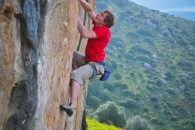












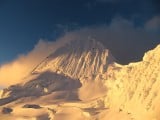
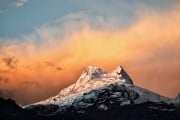

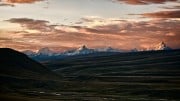
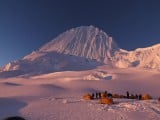
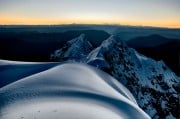
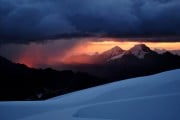

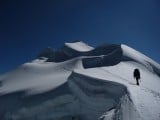








Comments
"A 600m colour climb starting at 45° and steepening to 80°" - sounds great!
:-)
Great article. More of this kind of material please.
Good article, but:
"Without rushing, 3 weeks is a good period of time that should allow 2-3 5000ers and 1-2 6000ers."
"Take your time with acclimatisation"
Seriously?!
I have been to Peru five times and IME three weeks is sufficient time to do "2-3 5000ers and 1-2 6000ers." The secret is to choose a valley that has multiple peaks available while spending the minimum time traveling. The weather in July/August is usually excellent.
IMO The best spot for a quick trip is Quebrada (Valley) Ishinca. From the base camp at 4400m you have Urus Este (PD- 5420m) and Ishinca (traverse PD 5530m) as day climbs and Tocllaraju (AD to D on Normal 6032m) and Ranrapalca (NE Face D 6162m) as two day climbs with high camps. There is also the W Face of Tocllaraju at D that is a fine route on ice and snow and is an excellent introduction to harder routes on 6000m peaks.
If you add in a day each way between Lima and Huaraz, two full days acclimatisation in Huaraz, a day each way between the BC and Huaraz, and two days acclimatisation at BC doing walks, you have a total of eight days plus climbing time.
Very doable IMO, assuming that you acclimatise normally.
" The adventure ticket is valid for 21 days and you may have to convince the park ranger of your experience as an alpinist. (Waving an alpine club membership card seems to work magic!)"
Anyone have any more information/experience on this? I was there in 2014 and had some trouble getting into the national park. We did finally manage but it was a hassle. Returning this summer and wondering if if its best to join the AC.